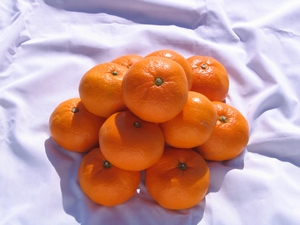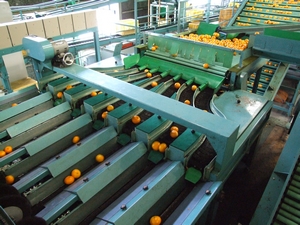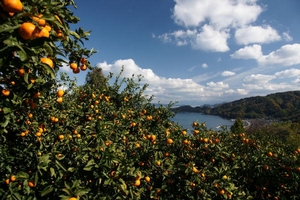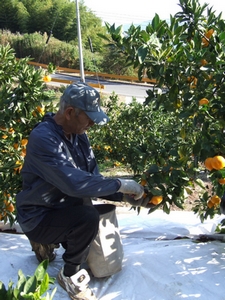Unshu mikan (Unshu mandarin orange)

Production location
Suo-Oshima-cho, Yanai-shi, Houfu-shi, Simonoseki-shi
Producers (group names)
Yamaguchi Prefectural Headquarters of National Federation of Agricultural Cooperative Associations
Product features
The mild and drier weather in Yamaguchi prefecture is suitable for cultivating Unshu mandarin oranges that feature a balance between high sugar content and favorable sourness. To bring out the best in this feature, in the Suo-Oshima area, the main production location, they use optical sensors to measure the sugar content and sourness to ship products with stable quality.

Some producers introduce sheet mulch cultivation shutting out rainwater and reflecting sunlight; they also rest the fields every other year. Unshu mandarin oranges are for eating and other uses such as juice.
Shipping period: October (extremely early harvesting) to February
Introduction of production locations
Unshu mandarin oranges started to be cultivated on a large scale during the Meiji period, and production areas spread to relatively mild weather regions on the coasts of the Seto Inland Sea and the Sea of Hibikinada including the Suo-Oshima-cho area.

This area, producing approximately 80 percent of the Unshu mandarin oranges in Yamaguchi prefecture, consists of islands in the Seto Inland Sea where production takes advantage of geographical features and weather where flat areas are limited, no big rivers run and rice production is difficult, but sunlight shines, drainage is good and less rain cause fruit trees to be disease-resistant. Yamaguchi prefecture cultivates and delivers summer mandarin oranges (Chinese citrons), Iyo kan (Iyo tangors), yuzu (small citrus fruit) and setomi, which is a Yamaguchi prefecture original species that utilizes the mild climate and natural features.
